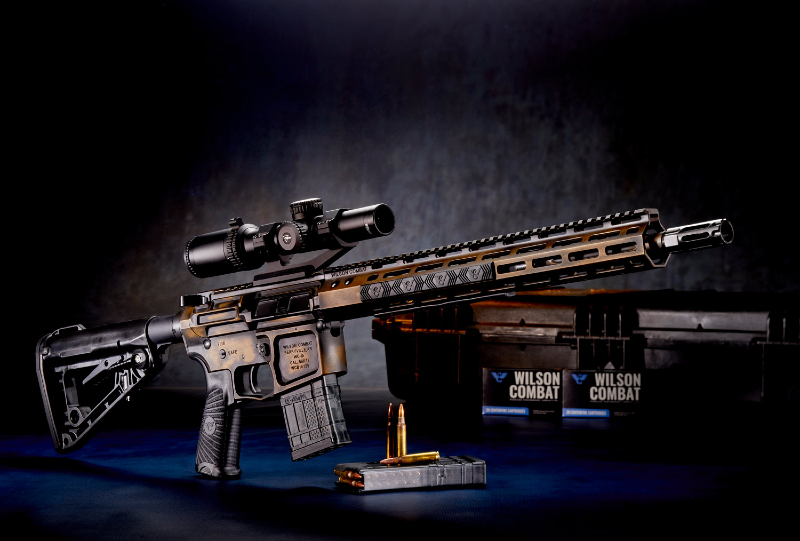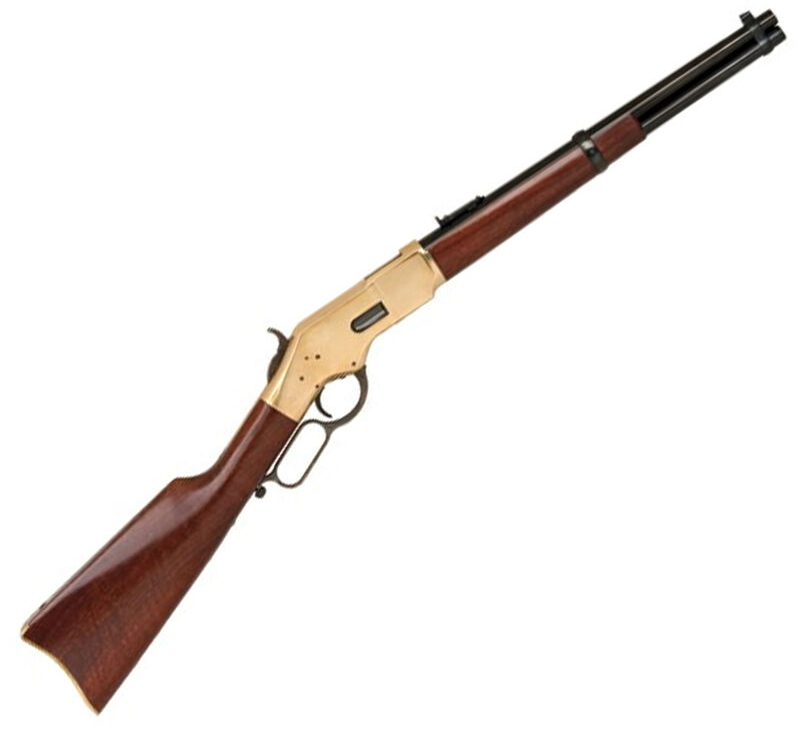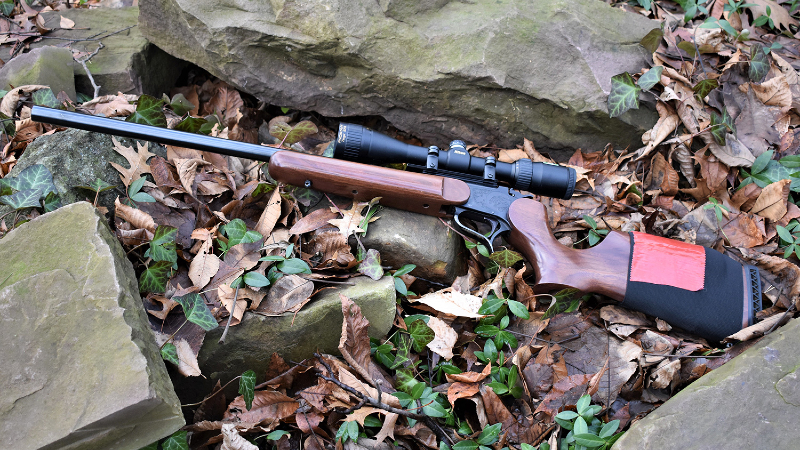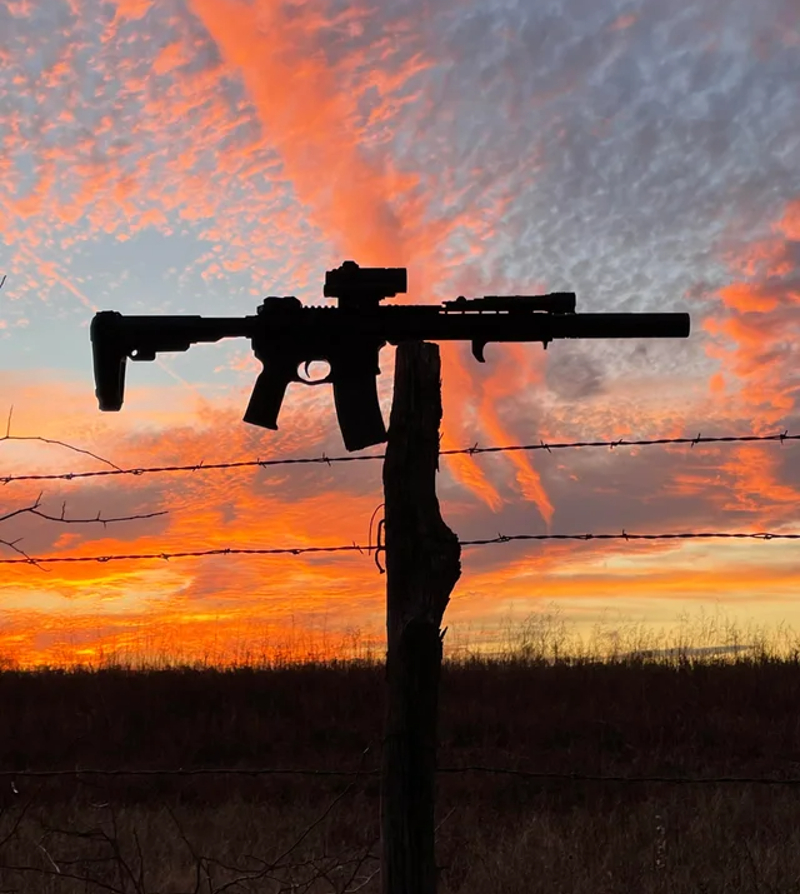There was a stretch of time when AR platform rifles were banned in the United States. It’s an issue that is being discussed again in certain political circles with many people stating a new ban would be the same as, or more extreme than, the first. So what was the ban of 1994 about? Did it only affect ARs? Why did it expire? We’re here to answer those questions, and more, to help you be a well-informed gun owner.

What was the AR Ban of 1994?
Most people know it as the AR Ban of ’94, but the actual title of the bill was—is—the Public Safety and Recreational Firearms Use Protection Act. Perhaps more importantly, the ban didn’t only affect ARs, but a number of other guns. Although it tends to be thought of as the AR ban of ’94, there was a lot more to it. For brevity, we’ll refer to it as such.

The AR Ban of ’94 was part of a $30 billion dollar crime bill—the Violent Crime Control and Law Enforcement Act of 1994—signed into law by former President Bill Clinton on September 13, 1994. One of the legal changes it made was changing the federal code “to prohibit the manufacture, transfer, or possession of a semiautomatic assault weapon.” Rather than a vague proclamation, though, a list of prohibited models was included. Magazines with a capacity of over 10 rounds were also banned in certain situations.
Interestingly, the bill grandfathered in guns that were owned prior to the bill becoming law, meaning it was not illegal to possess a gun as long as it was acquired or made before the ban went into effect.

What guns did the AR Ban of 1994 actually ban?
Listing every firearm that was banned as a result of the 1994 law going into effect would fill a great deal of space, but to give you a general idea of what was included, here’s a partial list:
- Ruger Mini-14 Autoloading Rifle (w/o folding stock)
- Browning Model 81 BLR Lever-Action Rifle
- Cimarron 1866 Winchester Replica
- Marlin Model 1895SS Lever-Action Rifle
- Winchester Model 94 Trapper Side Eject
- Browning A-Bolt Rifle
- Mauser Model 99 Bolt-Action Rifle
- Howa Lightning Bolt-Action Rifle
- Colt AR-15
- Steyr AUG
- Intratec TEC-9
- TEC-9
- Remington Model 7 Bolt-Action Rifle
- Remington Model 700 Classic Rifle
- Savage 110F Bolt-Action Rifle
- Tikka Premium Grade Rifles
- Weatherby Mark V Crown Custom Rifles
- Winchester Model 70 Super Grade
- Browning Model 1885 Single Shot Rifle
- Navy Arms Sharp Plains Rifle
- Ruger No. 1B Single Shot

- Thompson Center Contender Carbine
- Springfield Inc. M6 Scout Rifle/Shotgun
- Merkel Model 160 Side-by-Side Double Rifles
- Rossi Model 62 SA Pump Rifle
- Beretta A-303 Auto Shotgun
- Mossberg Model 5500 Shotgun
- Remington 11-87 Premier Shotgun
- Remington 1100 20 Gauge Deer Gun
- Ithaca Model 87 Deerslayer Shotgun

- Mossberg Model 500 Camo Pump
- Remington 870 Wingmaster
- Browning Citori O/U Trap Models
- Charles Daly Field Grade O/U
- Browning Recoilless Trap Shotgun
There are hundreds of other models listed as banned under the AR Ban of ’94. It’s understandable, to a point, that it’s seen as an AR ban, but in reality, a lot of lever-actions, bolt-actions, and shotguns were also banned.
What magazines were banned by the AR Ban of 1994?

The prohibition on large capacity magazines can be found in section 4 of the Act:
SEC. 4. BAN OF LARGE CAPACITY AMMUNITION FEEDING DEVICES.
(a) Prohibition.–Section 922 of title 18, United States Code, as
amended by sections 2 and 3 of this Act, is amended by adding at the
end the following:
“(x)(1) Except as provided in paragraph (2), it shall be unlawful
for a person to transfer or possess a large capacity ammunition feeding
device.
“(2) Paragraph (1) shall not apply to the possession or transfer
of any large capacity ammunition feeding device otherwise lawfully
possessed on the date of the enactment of this subsection.
“(3) This subsection shall not apply to–
“(A) the United States or a department or agency of the
United States or a State or a department, agency, or politica
subdivision of a State;
“(B) the transfer of a large capacity ammunition feeding
device by a licensed manufacturer, licensed importer, or
licensed dealer to an entity referred to in subparagraph (A) or
to a law enforcement officer authorized by such an entity to
purchase large capacity ammunition feeding devices for official
use;
“(C) the possession, by an individual who is retired from
service with a law enforcement agency and is not otherwise
prohibited from receiving ammunition, of a large capacity
ammunition feeding device transferred to the individual by the
agency upon such retirement; or
“(D) the manufacture, transfer, or possession of any large
capacity ammunition feeding device by a licensed manufacturer
or licensed importer for the purposes of testing or
experimentation authorized by the Secretary.”.
As for what the ban defined as being large capacity, it included magazines, belts, drums, feed strips, or any other devices that could hold or easily be converted to hold more than 10 rounds of ammunition.
Did the AR Ban also ban pistols?

Yes. Pistols were included in the Act, which gave the following parameters for which pistol designs were prohibited:
(C) a semiautomatic pistol that has an ability to accept a detachable magazine and has at least 2 of–
“(i) an ammunition magazine that attaches to the pistol outside of the pistol grip;
“(ii) a threaded barrel capable of accepting a barrel extender, flash suppressor, forward handgrip, or silencer;
“(iii) a shroud that is attached to, or partially or completely encircles, the barrel and that permits the shooter to hold the firearm with the nontrigger hand without being burned;
“(iv) a manufactured weight of 50 ounces or more when the pistol is unloaded; and “(v) a semiautomatic version of an automatic firearm….
Why did the Federal Assault Weapons Ban expire?

The ban had a sunset clause written into it, meaning it expired ten years after it was signed into law. When lawmakers passed it, they were aware it would last for one decade, then expire. Many people believe the sunset clause was purposefully included as a way to sway certain politicians to vote for it. Its lack of permanence might have convinced many in political power to go ahead and support its passing.

Did the Ban work?
According to studies—studies that were required to take place per the Act itself—the ban’s effectiveness was doubtful. A government report, the Updated Assessment of the Federal Assault Weapons Ban: Impact on Gun Markets and Gun Violence, 1994-2003, stated that prior to the ban, the prohibited firearms were used in approximately 2% of gun crimes. As for large capacity magazines, the report said they were used in between 14% and 26% of gun-related crimes before the ban.
As for the effectiveness of the ban, the report firmly stated “we cannot clearly credit the ban with any of the nation’s recent drop in gun violence.”
Regarding whether reinstating the ban makes sense, the report says:
Should it be renewed, the ban’s effects on gun violence are likely to be small at best and perhaps too small for reliable measurement. Aws [assault weapons] were rarely used in gun crimes even before the ban. LCMs are involved in a more substantial share of gun crimes, but it is not clear how often the outcomes of gun attacks depend on the ability of offenders to fire more than ten shots (the current magazine capacity limit) without reloading.
Will the Ban happen again?
Although the ban certainly could happen again, it’s impossible to predict. It’s logical to assume that if another ban became law, it might not have a sunset clause, and it might ban a greater number of firearms without grandfathering any in. However, there is truly no way to know.
Do you think the United States will end up with another federal ban on semi-automatics?


